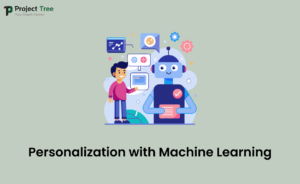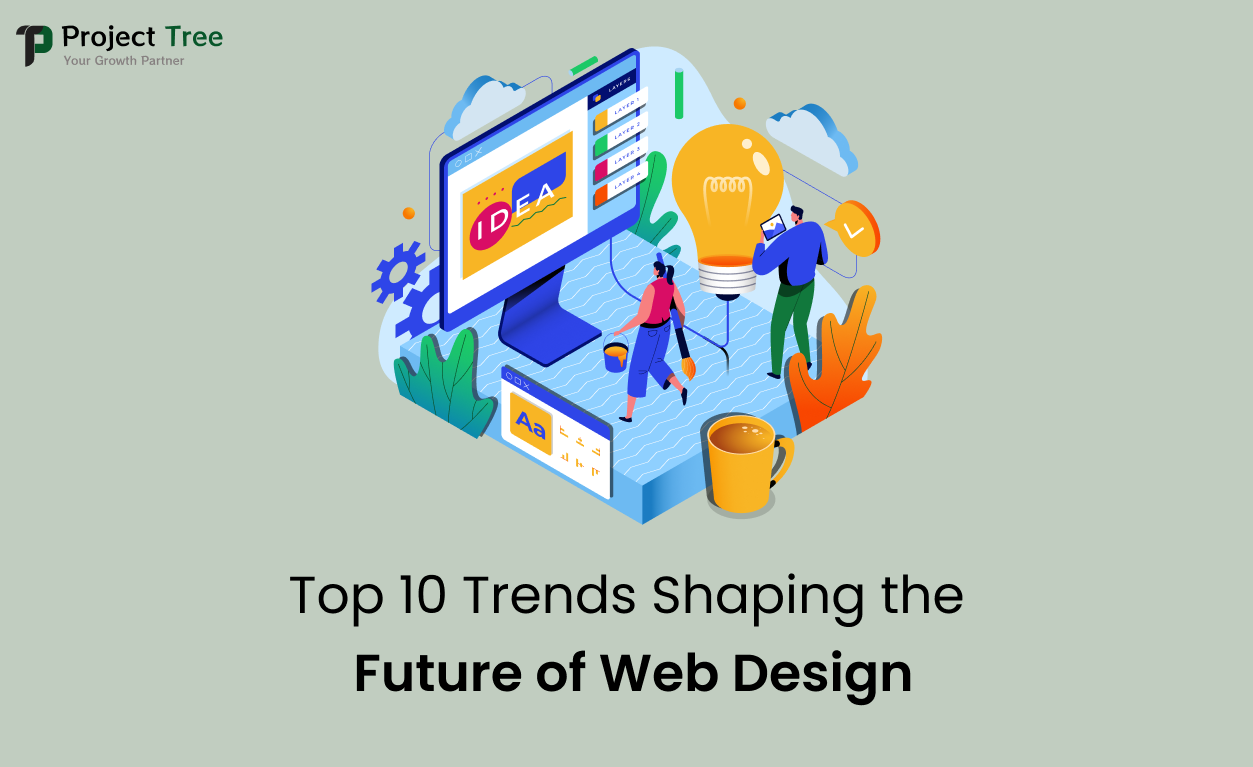Introduction
The field of web design growing faster than in recent years due to changes in the industry, changing client demands, and technological advances. An increase in the number of organizations and people’s desire to build attractive and efficient websites current with the latest developments is important. The trends can help a company that designs websites better satisfy the needs of its clients by offering solutions that not just engage users but also produce conversions. In this, examine the top 10 trends impacting the near future of web design along with how it could enhance user experience and the operation of websites.
Web design trends are no longer merely about aesthetics but are now playing a vital role in customer loyalty, identity creation, and online business expansion. Modern consumers believe simple directions, quick load times, and meaningful interactions, and every development covered below reflect those shifting demands. These developments have to be adopted by groups looking for a strong online presence. As we gaze at the way AI web design, virtual reality, and various other cutting-edge developments have transformed the industry, it grows obvious that changing to these shifts is essential to staying relevant and competitive.
Trends of Future Web Design
1. AI in Web Design
The use of AI is starting to speed up and customize web design operations. AI web design enhances both the process of creativity and the users expertise, with tools that suggest design components according to tastes and systems that change the layout of websites based on user behavior. The use of AI may automate routine activities, analyze user data, and even produce content that attracts specific demographic data. This enables developers and designers to concentrate more on creativity and originality, leading to greater excellence and uniqueness for each website.
2. Responsive and Mobile-First Design
A mobile-first approach to design is now more essential today as internet use on mobile devices keeps growing faster than usage on desktops. The web design anticipates a greater emphasis on adaptable designs that shift easily to various screen sizes and devices. It prioritizes essential information and services for those on the move while preserving an adaptable and flexible interface throughout all devices. Mobile-first designs are also more inclined to appear high in search engines, as Google now favors mobile-friendly websites. Companies, like web design agencies, are discovering that emphasizing mobile design is not only an option—it’s mandatory.
3. Voice-Activated Interfaces
The popularity of personal-activated interface continues to rise as virtual assistants such as Google Assistant, Amazon Alexa, and Siri grow more common. Upcoming websites are expected to include capabilities which listen to voice demands, making reading even easier. This development is particularly important for people who have impairments as well as people that prefer free browsing. Voice searching additionally opens up fresh SEO opportunities because consumers word their spoken requests differently than textual search. Companies using voice-activated devices may offer a simple, enjoyable environment as well as connect with a rapidly growing tech demand.
4. Augmented Reality (AR) and Virtual Reality (VR)
With highly complete immersion, virtual reality and augmented reality are changing user interaction while improving the constantly changing and engaging nature of online browsing. Online shopping, real estate, and interior design are currently employing these advances to let consumers online “try on” things or “walk through” rooms. Virtual reality and augmented reality components are going to be more common on web pages, increasing customer satisfaction and helping companies stand apart from the crowd. Create an interactive changing room wherein consumers can see the way things look fit themselves without purchasing a useful instrument that adds a new level to shopping online.
5. Personalization with Machine Learning

In web design, machine learning involves analyzing how users behave so as to provide customized material in real-time. Such as if an individual frequently goes to a clothing site to look for shoes, algorithms using machine learning may detect this pattern and emphasize shoe decisions on the homepage. Such modification improves the relationship with users, boosting the prospect of conversion. Using machine learning not only helps web designers improve style and content, yet it additionally improves client retention and fulfillment through offering a more intuitive experience. Internet design companies such as Projecttree use these technologies to help clients develop sites that adjust to consumer preferences.
6. Dark Mode and Low-Light UI
There are no indications that the popularity of dark mode is going to decrease. Darker interface are not just visually appealing but they also assist in reducing strain on the eyes, which becomes more important when individuals spent more time on screens. Many websites now allow visitors to choose between dark and light settings. This development indicates an increased focus on access and user ease, with users free to pick the UI style that most closely meets their needs. Once darkness develops an expected feature, developers have to make sure that it supports various aesthetic aspects while increasing reading and function.
7. 3D Graphics and Animations
A website acquires dimension from 3D graphics and animations that produce an appealing, modern interface that immediately captures the interest of visitors. These parts may be dynamic, enabling consumers to click and get around among items for a deeper view. Once limited by speed challenges, modern web technologies currently allow excellent 3D visuals to load quickly and operate properly. As the design of websites gets better, look to see more creative use of 3D elements to provide information in interesting manners and produce lasting connections among consumers.
8. Micro-Interactions for Enhanced Engagement
When visitors participate with particular elements on a web page, like remaining on an icon or clicking on a hyperlink, they’re shown tiny animations or responses known as tiny interactions. These relationships provide a further level of engagement and make the user experience more engaging while motivating users to engage in particular actions. The micro-interactions may convey feedback, verify an action, or offer small instructions that improve accessibility. The developers can enhance the whole experience through incorporating these minor impacts into the user journey, rendering it simpler and more pleasant
9. Minimalistic and Clean Design
While simple web design remains popular, its importance continues to rise as consumers select designs that are free of distraction and allow them to focus on what’s important. Clear design encourages performance, readability, and speed, leading to sites that are both visually appealing and easily usable. Simple designs are highly adaptable and operate well in a variety of industries, from corporate websites to creative portfolios. Working on minimalist design concepts can help a company that designs websites create faster-loading, easier-to-navigate websites that offer an intuitive user interface that appeals to modern web users.
10. Sustainability and Eco-Friendly Design
The trend toward ecological web design is increasing in acceptance as the impacts technology has on the natural world become more evident. Websites developed with cost-effective coding and ideal use of servers help decrease carbon emissions. Minimalist designs that prioritise vital information and load only the required resources reduce speed and effort. Web designers are currently thinking about natural methods like decreasing large pictures and videos and employing green hosting services. This development not only matches ecological goals, but it also attracts environmentally conscious customers that appreciate brands that accept longevity.
Conclusion
Web design has a bright future full of innovation and pleasure. From AI web design to virtual reality, these developments are affecting the way individuals interact with sites and receive online material. Web designers and web design companies must remain always up to date on these advancements so as to offer solutions that not just match present demands but additionally predict future needs. As companies, such as Projecttree, react to such changes, they design more interactive, accessible, and environmentally friendly sites that offer seamless user interfaces across all devices. Staying up on these developing trends is crucial to developing a website that looks out, engages consumers, and converts meets into significant interactions.
It is important to carry out these trends in an era when company impact is heavily influenced by digital interactions. Every trend provides an opportunity to create a more intriguing, approachable, and innovative website, whether it be through personalization, responsive design, or environmentally friendly methods. The Internet design company is entering an era in which function and creativity are inextricably linked, and those that accept these trends will not only take the lead in customer satisfaction yet also raise standards for the future of digital design.
By joining forces, ProjectTree and DrPro provide a unified platform that streamlines project management and healthcare workflows for greater efficiency.
FAQs
Q1. What is AI web design, and how does it impact the future of web design?
AI web design refers to the use of artificial intelligence in the design of web designs to help make the design process easier, making it more personal and efficient. It makes the complicated process of web design more flexible and customized in real time, based on the collected data.
Q2. Why is mobile-first design essential for web development today?
As traffic shifts towards mobile, it is important to focus on a mobile design that will guarantee the web templates’ compatibility with any gadget, while a standalone mobile design provides an opportunity to create a unique website interface for that format that will look good on any device. It also enhances the overall search engine results page positioning and user interaction.
Q3. How does augmented reality (AR) benefit websites?
AR is excellent in the educational and, in particular, e-commerce and real estate industries. Users were able to get experience of the products or environment that they are interested in and, at the same time, increase their interest in the websites and reduce instances of having many websites with the same interface in the market.
Q4. What are micro-interactions, and why are they important in web design?
Animated-based feedbacks These are tiny reactions that a user receives when engaging with some aspect of a website. It makes navigation easy, enhances the overall use of the website, and offers the users the extra something coming with interfaces.
Q5. How can a web design agency contribute to sustainability?
Web design agencies can build environmentally friendly websites through the effective application of code optimization, web host efficiency, and utilizing sustainable hosting services, which can minimize the direct effects of green hosting on web sites.

